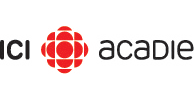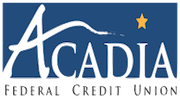Wampum Belt Presentation Scheduled
A wampum belt is to be presented to the First Nation Band of Maliseet on behalf of the Acadians at a ceremony in advance of the opening of the World Acadian Congress (CMA) Friday August 8, 2014 at Turgeon Park, Edmundston, New Brunswick, Canada.
According to David Wylie, a director with the Madawaska Historical Society in Madawaska Maine, the wampum belt is being presented to the Maliseet as a token gratitude by the Acadians for being permitted to live on Maliseet land. The belt is being made with genuine white whelk and purple quahog wampum beads, and features two cross shaped figures symbolizing the people represented in the presentation, and two pyramid shapes depicting the ‘wigwams’ of the Maliseet and Acadians. Centrally placed and flanked by these figures is a representation of a peace pipe, joining the two ‘tribes’, Acadian and Maliseet in harmony.
The symbols on the belt are traditional and derive from an earlier wampum belt used the establishing a confederation of the Four Eastern Tribes (Maliseet, Penobscot, Passamaquoddy and Mi’kmaq).
“We felt it appropriate to use traditional symbols to convey gratitude and peaceful coexistence,” Wylie notes, “particularly after such a long time has passed since the Acadians settled here in 1785.”
Wylie indicates that wampum and wampum belts have a particular importance and significance to First Nations past and present. Wampum belts often used to seal treaties, confirm alliances, announce marriages or mourn the passing of chiefs and elders in the native community. It was even used to declare war with belts painted red and symbolic tomahawks portrayed in wampum beads. Unlike common lore, wampum was not used as money except by whites in times of scarcity.
“There is an established protocol to presenting a wampum belt.” he added. “The protocol involves formal addresses, providing traditional gifts and explanations for the meaning behind the gifts being offered to the Maliseet representatives.” Wylie said the Madawaska Historical Society pledged $500 to purchase gifts such as bolts of colored cloth, axes and ironware, household goods, personal decorations such as brass gorgets and glass beads, and other objects having cultural and historical importance. The Greater Grand Isle Historical Society is contributing $100 to the gift fund, and other donations are being sought.
“We’re even hoping to have re-enactors present fire muskets in a traditional greeting before the presentation ceremony starts.” Wylie said.
A signal part of the whole program involves the creation of the wampum belt itself. With funds from the CMA, wampum beads were purchased and delivered to a family of Acadian descendants living in Acton, Massachusetts. The Gendreau-Distler girls; Eli 10yrs old, Zoë 8, and Sage, 6, are fabricating the belt for the ceremony. The youths volunteered to create the belt, familiarized with native culture though a native studies program carried out by the Nashoba Brooks School in nearby Concord. Eli, Zoë and Sage are the daughters of Michelle Gendreau and Josh Distler of Acton MA, and the granddaughters of John and Frances Gendreau of Madawaska, ME.
“There is the element of innocence in these young women making the belt. The symbolism isn’t lost on the First Nation recipients.” Wylie notes.
The concept of presenting a wampum belt was developed through conversations between Wylie and Ken Theriault Jr. and their contacts with the First Nation Maliseet community near Edmundston, NB. The project was reinforced through discussions with Lyne and Michel Pelletier, Culture and Traditions Coordinators in the Maliseet Village, and Jennyfer Tolley, Intergovernmental Affairs Coordinator and a native liaison with the CMA.
The Madawaska Historical Society is soliciting donations to purchase traditional gifts for presentation at the wampum ceremony August 8. Contributions to the fund may be sent care of the Madawaska Historical Society, Madawaska Public Library, 183 Main Street, Madawaska ME 04756, attention Ken Theriault Jr., Librarian. Gifts will be on display at the CMA Opening Ceremony and afterward at the Maliseet Village.
A detailed explanation of the wampum ceremony and protocol follows sometime in the near future.






















